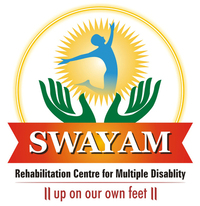

We organized the workshop on speech therapy for parents. The training program explained in detail regarding how speech could be developed and what alternative methods could be used. Topic included were feeding, communication, language and speech problems in the children with cerebral palsy and autism disorder by Mrs. Alpana Pagare who is an Audiologist & a speech therapist from Nair Hospital working as associate professor since 22 years.


The Topic started with formal information about speech therapy & Introduction about speech therapy and what the role of speech and language therapy in cerebral palsy and autism disorder.


She explained about the process for speech development. It included 1.Deep Breathing & exhalation, (2) Voice & VocaI Production (3) Intonation (4) Starting, Maintaining & Stopping Sound (S) Vowel sound sequencing word & purposeful speaking.
She explained about the oral cavity, function of gastro-intestinal tract, what is the important function of tract. She showed series of picture representing the process of eating chewing & swallowing food. She demonstrated various exercises for speech, communication. Social skills and concept learning for children with verbal and non-verbal type of communication. She talked about how you can improve & facilitate verbal communication Receptive language. (Understanding speech and follow commands) How to work on comprehension of simple one word common. So, she explained about the technique by using flash cards, pictures, to explain simple action verbs like standing, sitting, sleeping, smiling, crying. These were followed with pictures matching, imitation and situation.
Non-verbal communication ways like communication chart, activity board, flash cards, jig-saw puzzles, sign language, facilitating the child for pointing, nodding and such ways to express their needs.
She explained about the diet chart, how to feed (liquid, semisolid, soft and solid). She also explained about the postural sitting & carrying child after feeding.
She explained newer technology for child's concept formation and cognitive and for echolalia (repetitive speech) the child needs to be diverted through some constructive activity so that child's attention gets diverted. She added not to respond to your child's verbal repetition by saying (don't say that or stop it). Instead, just give the child the activity he/she enjoys.
Lastly, we had an interactive session of questions and answers between parents where she solved all the queries of parents.